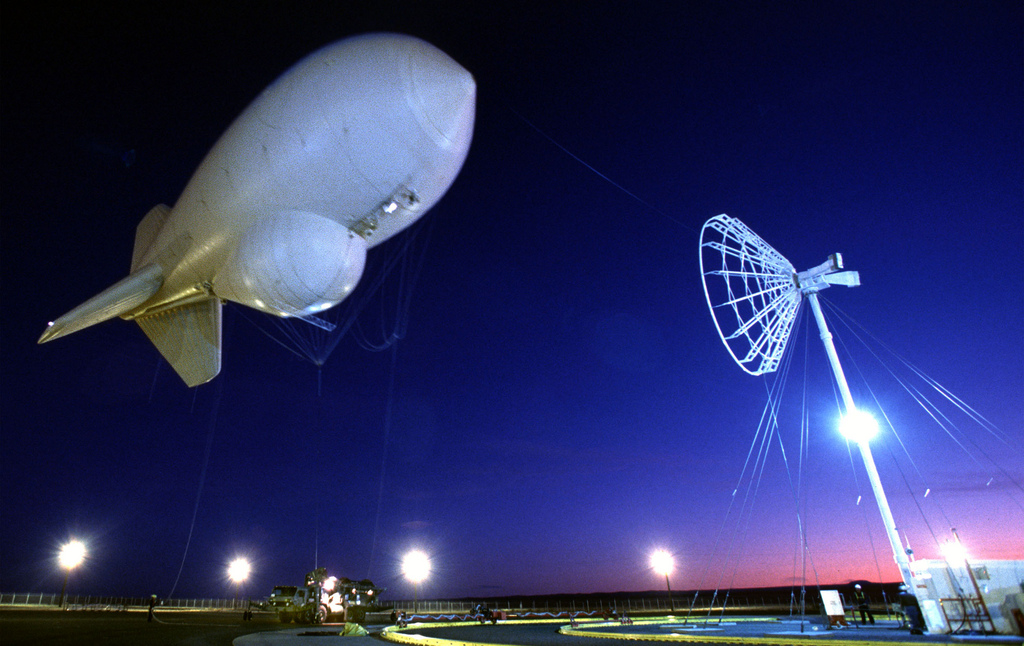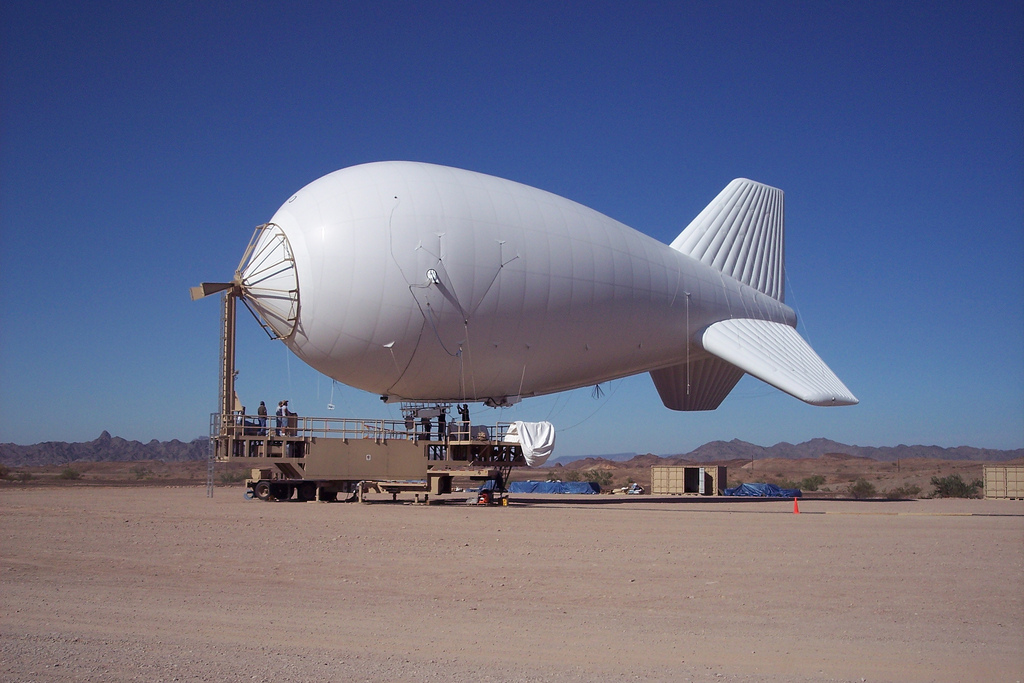
Lockheed Martin’s 420k Persistent Threat Detection System is a tethered aerostat-based system, capable of staying aloft for weeks at a time and providing round-the-clock surveillance of broad areas. The United States Army first began using PTDS in Afghanistan and Iraq in 2004. Photo Lockheed Martin.
The Persistent Threat Detection System (PTDS) is a tethered aerostat-based system that has been in use by the U.S. Army since 2004. According to the PTDS is equipped with multi-mission sensors to provide long endurance intelligence, surveillance, reconnaissance and communications in support of coalition forces in Afghanistan and Iraq.
According to information provided by the manufacturer, Lockheed Martin, the PTDS “leverages a wide-area, secure communications backbone for the integration of threat reporting from multiple available sensors. The system’s sensor integration architecture supports the automated interoperability between tactical/theater surveillance assets and the dissemination of threat data to operational forces to aid interdiction of hostile fires and unconventional threats.”1
According to a brochure released by Lockheed Martin, the PTDS is a “sensor integration architecture”:
The PTDS is an aerostat-based sensor integration architecture designed to support the automated interoperability between tactical/theater surveillance assets and the dissemination of threat data to operational forces to aid interdiction of hostile fires and unconventional threats. PTDS leverages a wide-area, secure communications backbone for the integration of threat reporting from multiple available sensor assets. 2
The brochure also states that PTDS is being used to provide radar surveillance on the U.S.-Mexico border as well as in counterdrug operations in Florida and the Caribbean:
The 420K Aerostat System is the standard configuration selected by the U.S. Air Force for their Tethered Aerostat Radar System (TARS). All TARS systems are equipped and integrated with Lockheed Martin’s L88 wide area surveillance radar. The 420K is the only large aerostat system in daily use in the U.S.
The TARS provides low-level radar surveillance for the United States-Mexico border, the Florida Straights, and part of the Caribbean in support of U.S. Counter-Drug and Counter-Narco Terrorism missions and other continental United States air sovereignty missions. The TARS is optimized for detecting low, slow flying aircraft as well as maritime and surface targets.3
The PTDS consists of an aerostat, tether, mobile mooring platform, mission payloads, ground control shelter, maintenance and officer shelter and power generators and site-handling equipment.
Two Models of PTDS
According to Lockheed Martin, there are two main classes of PTDS systems: the 420K and the 74K model. The 74K Aerostat system is in use by the U.S. Army in Iraq and Afghanistan. The 420K Aerostat system is in use by the U.S. Air Force in U.S. Counter-Drug and Counter-Narco Terrorism missions.
420K Specifications:
Hull Volume: 12,000 m3 (420,000 ft3)
Length: 64 m
Mooring: Fixed Base
Payload: 1,000 kg
Operating Alt: 4,600 m
Radar Horizon: 275 km
74K Specifications:
Hull Volume: 2,100 m3 (74,000 ft3)
Length: 35 m
Tether: Power with fiber optics
Mooring: Mobile/Re-locatable
Payload: 500 kg
Operating Alt: 1,500 m
Radar Horizon: 160 km
Photos of PTDS
The following photos are of the 74K Aerostat System produced by Lockheed Martin.
Share this:
Source notes:
- Lockheed Martin. Persistent Threat Detection System. Accessed August 28, 2010. http://www.lockheedmartin.com/products/PTDS/index.html [↩]
- Lockheed Martin. Aerostat Systems Brochure. Accessed August 28, 2010. http://www.lockheedmartin.com/data/assets/ms2/pdf/AerostatSystems.pdf [↩]
- Ibid. [↩]


